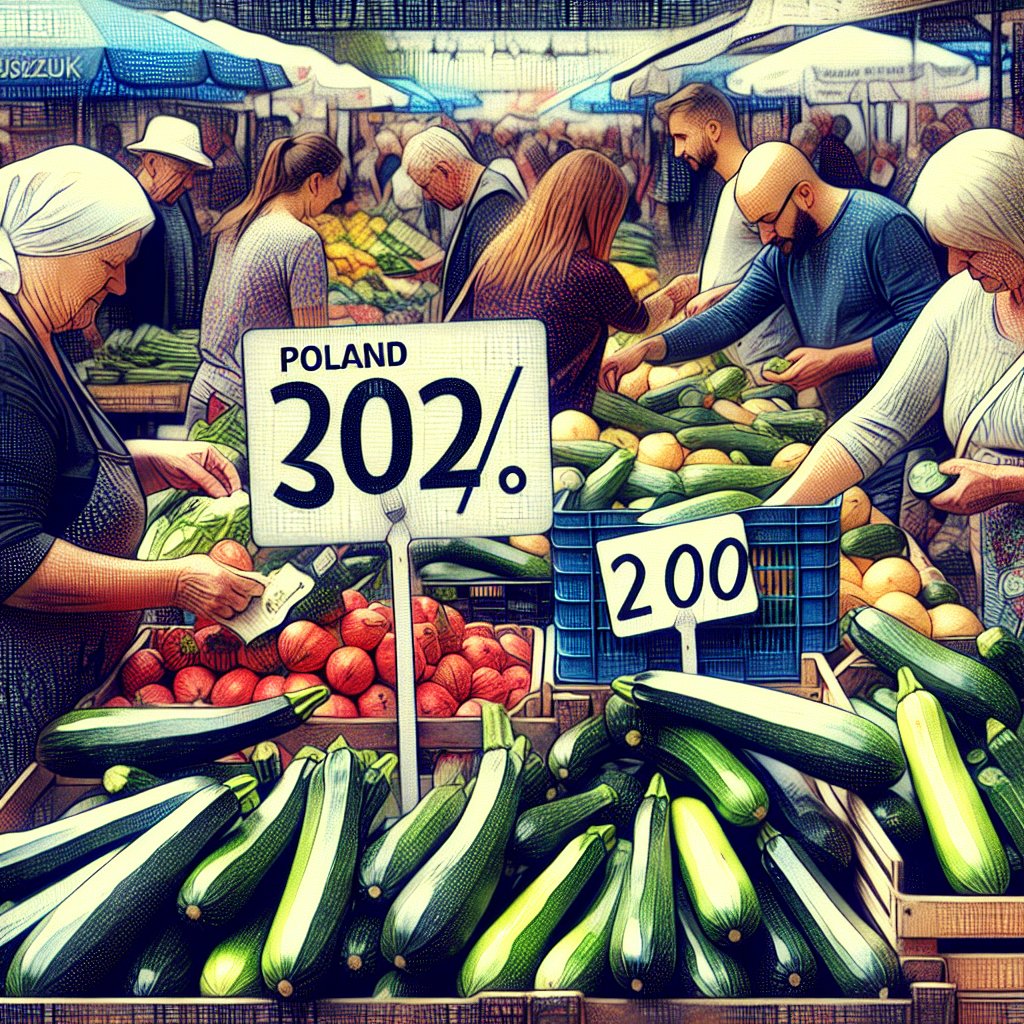The prices of zucchini in Poland have become a topic of significant interest among farmers, consumers, and market analysts alike. As a versatile vegetable that is popular in various culinary applications, zucchini plays a crucial role in the agricultural landscape of Poland. Understanding the factors that influence zucchini prices, as well as the market trends and forecasts, is essential for stakeholders in the agricultural sector. This article delves into the current state of zucchini prices in Poland, explores the factors affecting these prices, and provides insights into future trends and predictions.
Current State of Zucchini Prices in Poland
As of 2023, the prices of zucchini in Poland have shown considerable fluctuations due to various factors, including weather conditions, supply chain dynamics, and consumer demand. The average price of zucchini during the peak growing season typically ranges from 3 to 6 PLN per kilogram, depending on the quality and region of production. However, prices can soar during off-peak seasons, reaching up to 10 PLN per kilogram as supply diminishes.
In recent years, the demand for zucchini has increased, driven by a growing trend towards healthy eating and the popularity of plant-based diets. This surge in demand has prompted many farmers to expand their zucchini cultivation, leading to an increase in supply. However, the balance between supply and demand is delicate, and any disruption can lead to significant price changes.
Factors Influencing Zucchini Prices
Several key factors influence the pricing of zucchini in Poland:
- Weather Conditions: Weather plays a critical role in agricultural production. Unfavorable weather conditions, such as excessive rain or drought, can adversely affect zucchini yields, leading to reduced supply and higher prices.
- Production Costs: The costs associated with growing zucchini, including seeds, fertilizers, labor, and transportation, directly impact the final price. Rising production costs can lead farmers to increase their prices to maintain profitability.
- Market Demand: Consumer preferences and trends significantly influence zucchini prices. As more people adopt healthier eating habits, the demand for fresh vegetables, including zucchini, has risen, pushing prices higher.
- Import and Export Dynamics: Poland’s position in the European market affects zucchini prices. Imports from other countries can lead to price competition, while exports can create additional demand, influencing local prices.
- Seasonality: Zucchini is a seasonal crop, and prices tend to fluctuate based on the time of year. During the harvest season, prices are generally lower, while off-season prices can be significantly higher due to limited availability.
Market Trends and Future Predictions
Looking ahead, several trends are expected to shape the zucchini market in Poland. The increasing focus on sustainable agriculture and organic farming practices is likely to influence production methods and consumer preferences. As more consumers seek organic options, farmers may need to adapt their practices to meet this demand, potentially affecting prices.
Additionally, technological advancements in agriculture, such as precision farming and improved irrigation techniques, could enhance zucchini yields and reduce production costs. This may lead to more stable prices in the long term, as increased efficiency can help balance supply and demand.
Consumer Behavior and Preferences
Consumer behavior is another critical factor that will influence zucchini prices in the future. As awareness of health and nutrition continues to grow, the demand for fresh, locally sourced vegetables is expected to rise. Farmers who can effectively market their zucchini as fresh and organic may command higher prices, while those who do not adapt to changing consumer preferences may struggle to compete.
Impact of Global Events
Global events, such as economic downturns, pandemics, or geopolitical tensions, can also have a significant impact on zucchini prices. For instance, during the COVID-19 pandemic, supply chain disruptions led to price volatility in many agricultural products, including zucchini. Future global events may similarly affect the market, making it essential for farmers and stakeholders to remain vigilant and adaptable.
Conclusion
The prices of zucchini in Poland are influenced by a complex interplay of factors, including weather conditions, production costs, market demand, and global events. As the agricultural landscape continues to evolve, understanding these dynamics will be crucial for farmers, consumers, and market analysts. By staying informed about market trends and consumer preferences, stakeholders can make better decisions that will ultimately benefit the entire agricultural sector.
In summary, the future of zucchini prices in Poland will depend on various factors, including the ability of farmers to adapt to changing market conditions and consumer preferences. With the right strategies in place, the zucchini market can thrive, providing both economic opportunities for farmers and healthy options for consumers.




